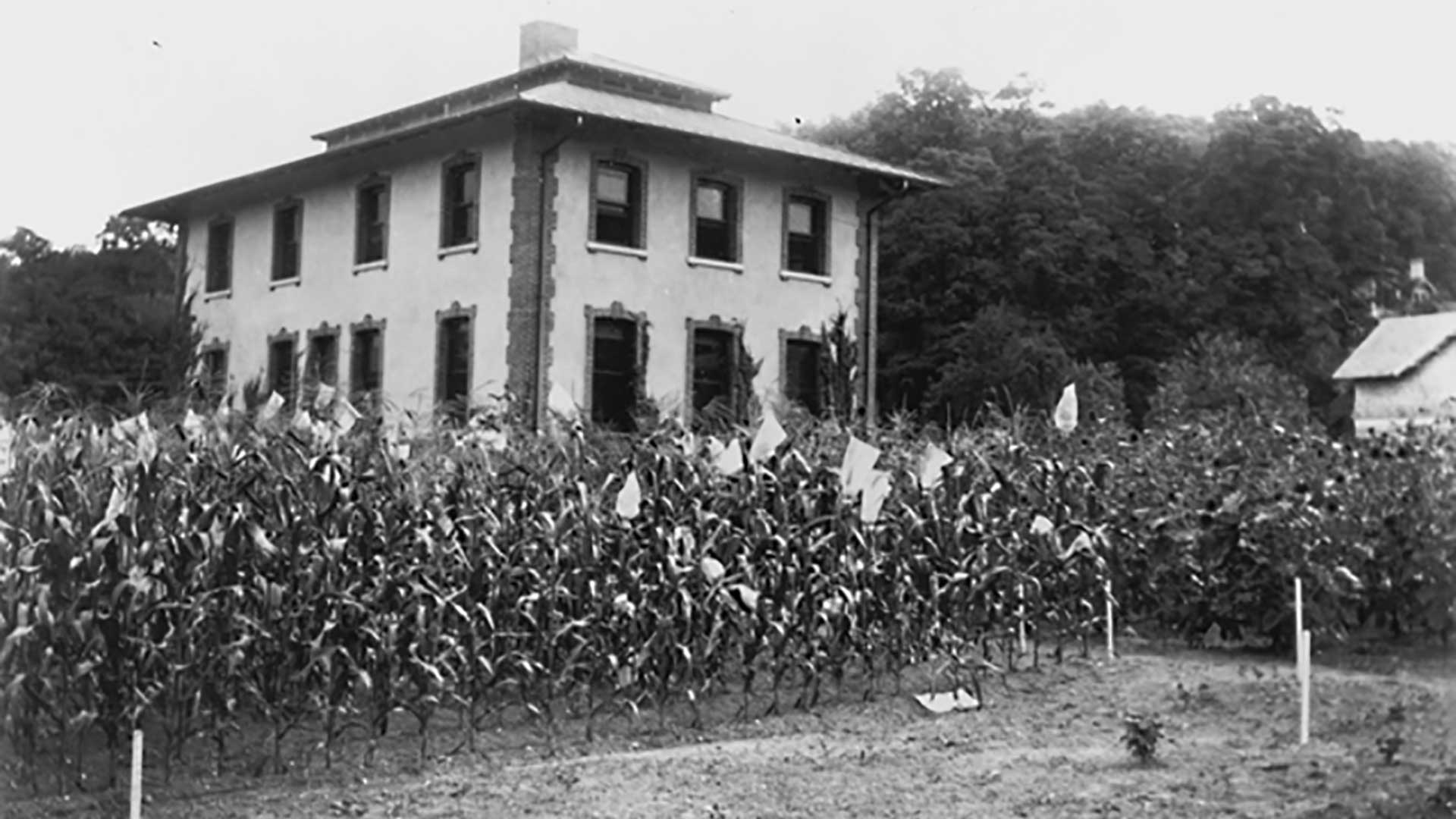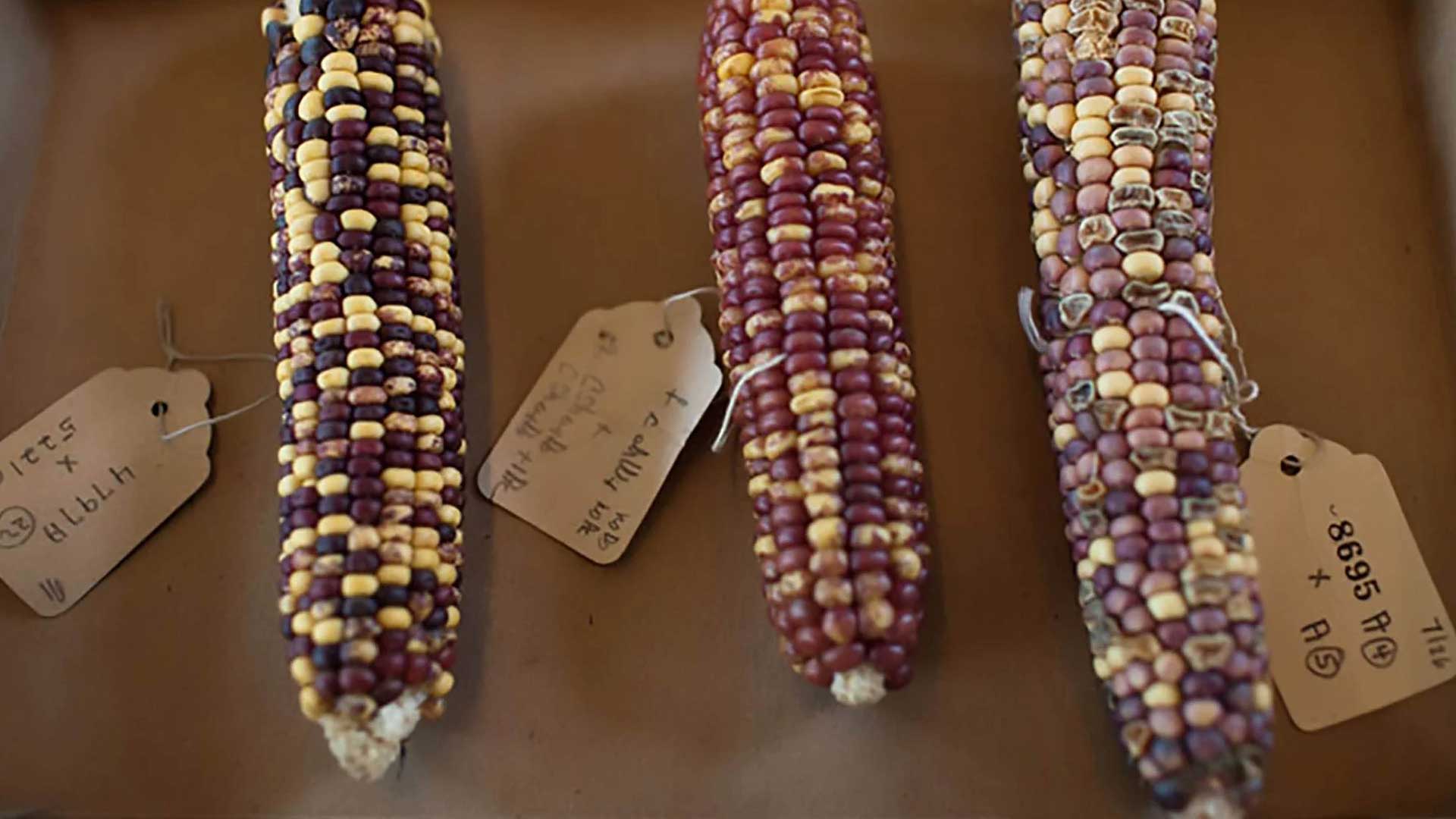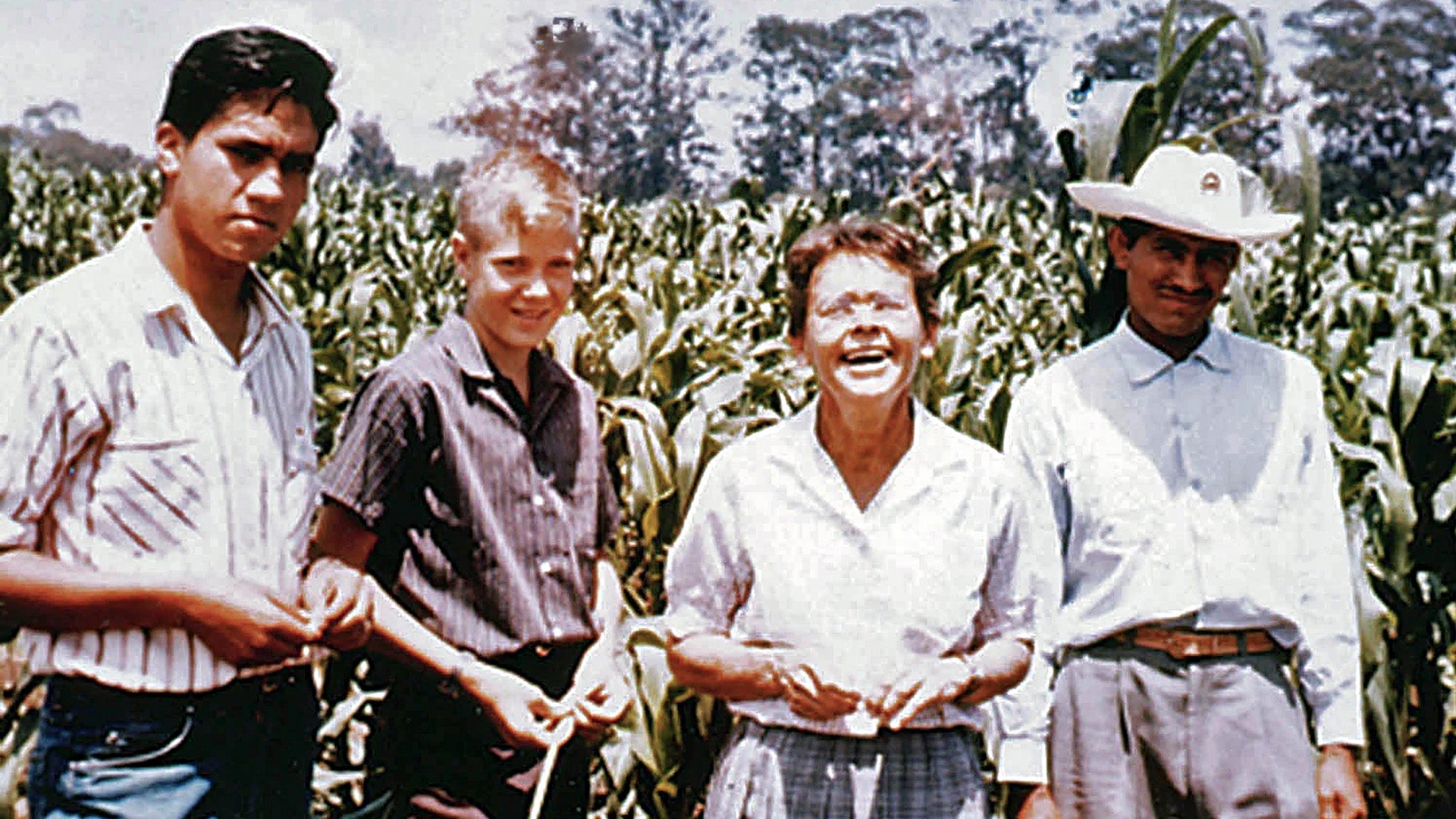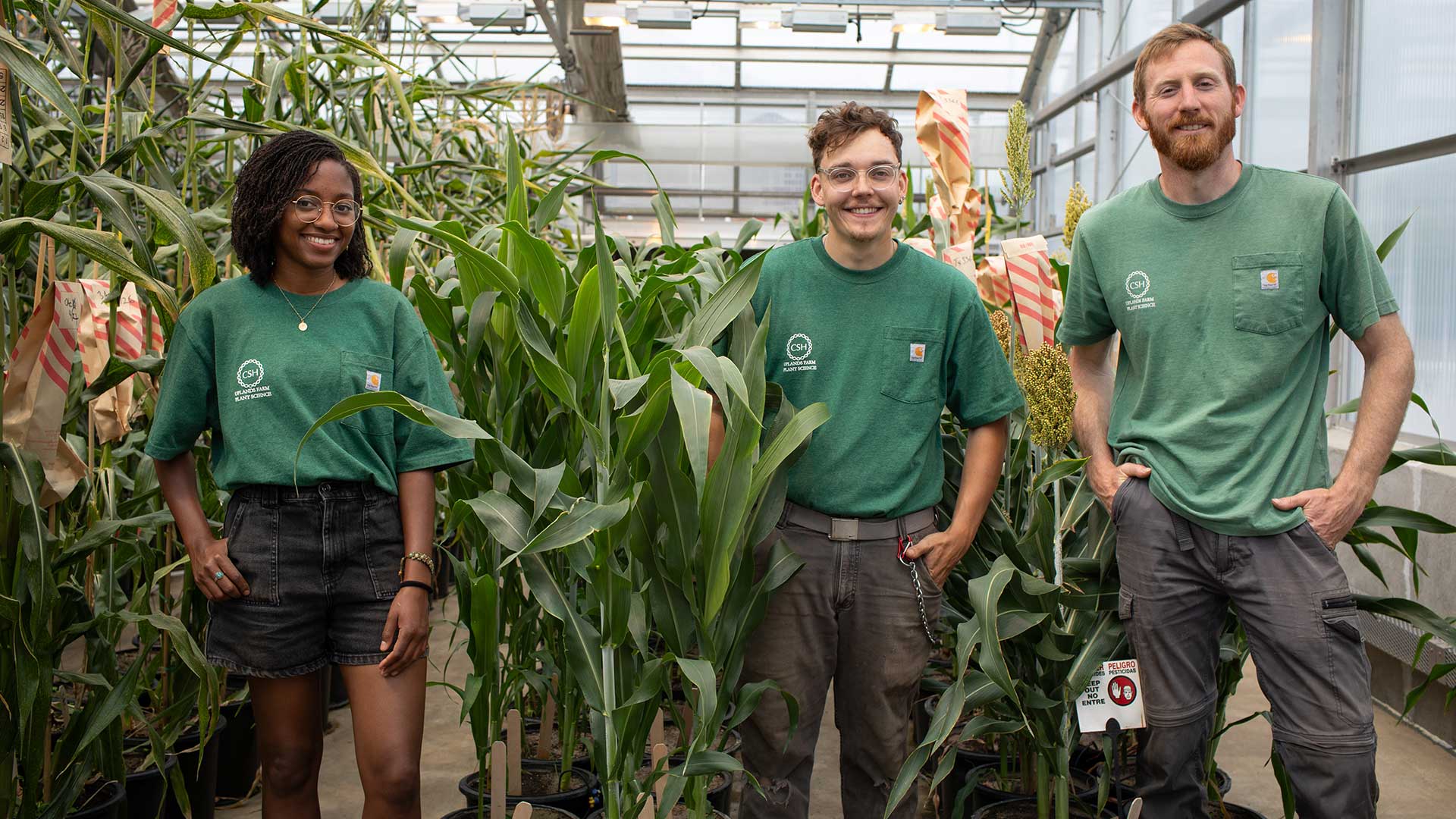But even before McClintock harvested her first samples at Cold Spring Harbor Laboratory (CSHL), this mainstay of BBQs and breakfast cereal played a key role in groundbreaking genetics research.
Thirty-four years prior to McClintock’s arrival at Cold Spring Harbor, geneticist George Shull maintained a cornfield behind what is now CSHL’s Carnegie Library. In 1908, while investigating genetic inheritance in corn, Shull discovered heterosis, or “hybrid vigor.” He found that combining two different inbred strains of corn produced a variety with consistently higher yields and larger ears.

Much like modern-day advances such as CRISPR-Cas9 gene editing, hybrid vigor revolutionized biology virtually overnight. Over 100 years later, its discovery remains the basis for modern crop production. How’s that for seeds of inspiration?
In 1942, Barbara McClintock planted her first corn seeds in the very same field. Over the following decades, she would develop “very particular, tried-and-true methods in field, plant, and seed care.” McClintock preferred corn with large tillers—branching structures that grow at the base of the plant. And she favored corn with tassels (male flowers).
“Barbara grew about 2,000 plants every year, a relatively modest number for maize geneticists of the time, but she kept track of each kernel planted, each ear harvested, and each tassel used,” says CSHL Professor Rob Martienssen, who studied under McClintock. “She stored her corn in a room near her lab, without air-conditioning, but with a special fan system set up that kept it dry.”

Although she maintained the cornfield behind Carnegie for over 40 years, it wasn’t McClintock’s only source. She also made frequent trips to Mexico, bringing back seeds from different regions of the country for her hybrid strains.
“Different corn varieties make different numbers of seeds,” CSHL Professor and corn geneticist David Jackson explains. “My own lab has been hunting for genes that control this variation. Manipulating the expression of these genes—for example, using CRISPR-Cas9—has enabled us to increase seed production and potentially make corn production more sustainable.”
McClintock retired from her active role at CSHL in 1968. That same year, her cornfield made way for a new parking lot needed to accommodate the lab’s growth. In 1984, CSHL acquired 10 acres of land from a nearby nature preserve. When the Uplands Farm Agricultural Field Station opened that year, McClintock transferred her corn to a reserved plot. It was the first cornfield planted at CSHL for genetics research since her last harvest behind Carnegie Library.

CSHL Senior Farm Manager Tim Mulligan has fond memories of McClintock’s final days on the Farm. “I started my career at CSHL as a horticulturist in 1986, and it was in that capacity that I met Barbara,” he recalls. “We hit it off quickly, engaging in things like music—she played banjo and I guitar—nature, and baseball. I became farm manager in 1989, and I had the privilege of growing the last corn she was to cross.”
Today, Uplands Farm continues to play a vital role in CSHL research. Uplands provides researchers access to 12 acres of farmland for seasonal growth and state-of-the-art greenhouses for year-round experiments. It remains an integral part of the Plant Biology program at CSHL, with a long history of innovation.
In recent years, the Farm has had two new climate-controlled growth chambers installed. When it came time to name them, CSHL plant biologists went with two obvious choices: the father of modern genetics, Gregor Mendel, and none other than Nobel laureate Barbara McClintock.
“So much has changed involving equipment and farm resources,” Mulligan says, “but the research and science have stayed focused on the ultimate goal of crop improvement to feed a growing world. Breakthroughs like CRISPR and mRNA will help us achieve these lofty yet dire goals.”

